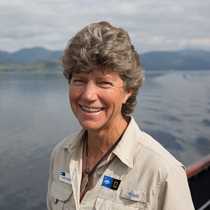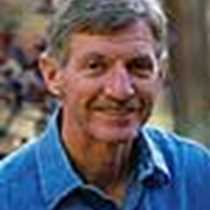Morning found us on the shores of the beautiful island of Canna, with sunshine and quiet seas. As we sailed away from the island, Ella Potts of the Hebridean Whale and Dolphin Trust (HWDT) gave us a talk on the local orca population, which unfortunately is dying off. Yet a large male, known as John Coe, was recently seen not too far from the Isle of Mull, though we were not so lucky as to get a glimpse of this great marine mammal! Ella left us when we put into Armadale on the Isle of Skye, heading back to work on Tobermory.
We disembarked at Armadale and headed over to the Clan Donald Centre with its museum, castle ruins and gardens. The museum provides an excellent history of Clan Donald and the Lord of the Isles, a line of nobility from a mixed Viking-Gaelic ancestry that ruled over the west coast and islands of Scotland until the 15th century. The museum’s history starts with information on the ancient kingdom of Dalriada, which lasted from about 500-1000 A.D. and reached from Ireland to Argyll in Scotland; the center of Dalriada in Argyll is considered by many to be the birthplace of modern Scotland. After viewing the museum, many took a pleasant stroll through the gardens, enjoying the sunny warm morning. The castle ruins on the edge of the garden are from a building constructed in the 18th century. They were added to the castle in 1815 then burnt down in 1850, leaving the ruins standing today.
From Armadale we sailed up to the Kyle of Lochalsh, our last berth of the trip. The town lies on the mainland, just a short drive over a large bridge to the Isle of Skye. We had two activities to choose from this afternoon. One group headed off with David to Eilean Donan Castle and the village of Broadford. Eilean Donan has been featured in many films and rumor has it that it is photographed more than any structure in Scotland. It is a picturesque castle, rebuilt by lieutenant colonel John MacRae-Gilstrip in the 20th century for Clan MacRae. The group went from the castle to Broadford on the Isle of Skye, with a visit to the hotel where Drambuie was first served, then walked out to the old pier with nice views over the sea loch.
The alternative outing for the afternoon was a hike with Robin and Stewart into Sligachan Valley in the heart of the magnificent Cuillin Mountains on Skye, known for the high and rugged peaks. Our walk took us between the Black Cuillins and the Red Cuillins, with lowland moorland surrounding us, complete with heather and bog. Most of Skye was formed from volcanic activity over 60 million years ago, and the Black Cuillins are volcanic gabbro, the Red a volcanic granite. The landscape has been subsequently shaped by erosion and carved by ice during the Ice Age, creating dramatic scenery.
Evening found us gathered for one last time. As the guest slideshow scrolled by, we gave a toast to a wonderful week at the captain’s Farewell Cocktail Party, then enjoyed a farewell dinner complete with guest manager Brian’s recital of Robbie Burns “Ode to the Haggis”, and a sampling of that “great chieftain of the pudding race.” A local couple provided evening folk music, and so our week in the Highlands and Islands came to an end. As they say here, Haste Ye Back!









